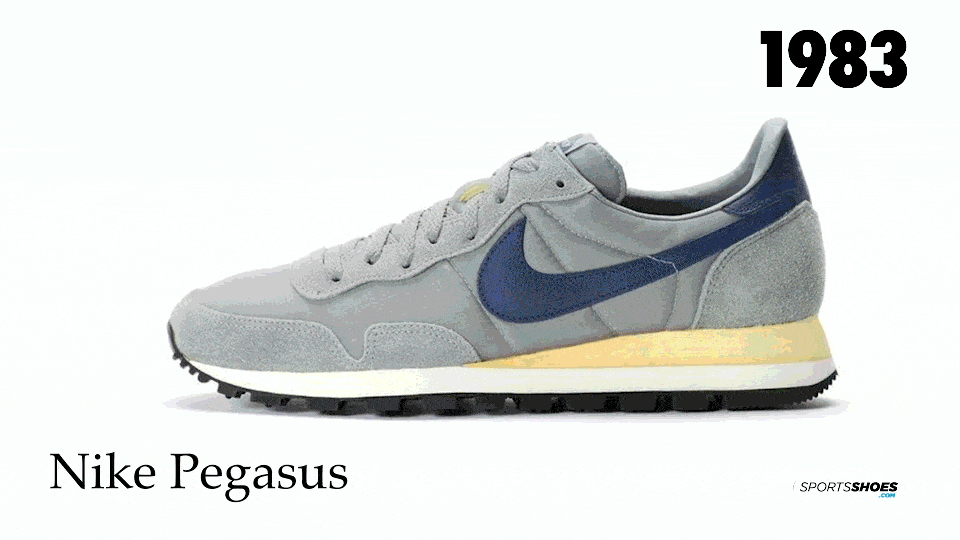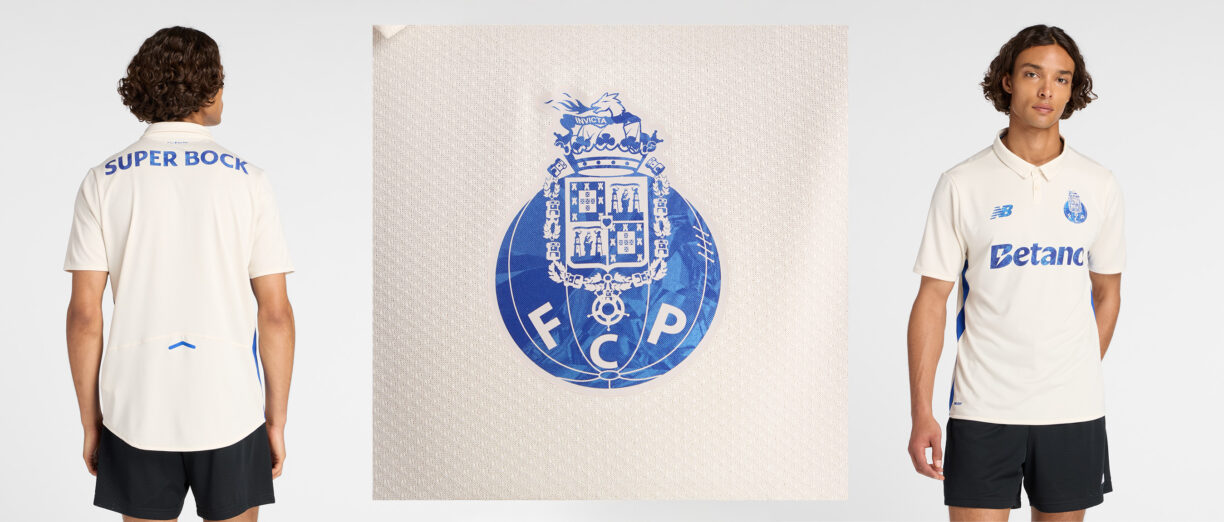To celebrate the launch of the Nike Pegasus 37 SportsShoes.com has created a fascinating gif, depicting the evolution of the iconic running shoe.
First launched in 1987 and named after the winged horse from Greek mythology, the Nike Pegasus was designed to embody quickness, movement and the idea of flying on air.
Now in its 32nd iteration and 37th year, the technology in the Nike Pegasus of today is a far cry from its humble beginnings. Here, SportShoes.com breaks down how each model changed and how the Nike Pegasus became the ultimate road shoe of choice.
Timeline:
1983 – The Nike Pegasus goes on sale for the first time.
1985 – Pegasus GX releases with a lighter weight of 10z.
1987 – Pegasus 3 launches with more air added to the EVA foam sole for enhanced cushioning.
1988 – The new model launches as the “Nike Air Pegasus”. The Pegasus is now available in a wider range of colours and comes with off-road grip options.
1989 – Pegasus 5 launches, updated with an ultra-soft and breathable upper for what was a revolutionary glove-like fit for its time.
1990 – Pegasus releases with a tweaked upper, this time using suedes and nylons.
1991 – A new plastic side panel is introduced in the Pegasus 7. This is the model worn by Steve Spence at the 1991 Marathon World Champs where he won bronze.
1992 – Pegasus 8 launches with a laterally reinforced heel for ultimate stability.
1993 – Pegasus 9 releases with an updated material introduced and a spandex inner sleeve. Over 17 million pairs of Air Pegasus have now been sold since its release.
1995 – Pegasus 10 launches with a fleece liner for increased comfort on the road.
1996 – The Pegasus 11 launches and is the first Pegasus with a visible air unit in the heel.
1997 – The visible air unit is short lived, with the Pegasus 12 being the last Pegasus to feature the unit.
2000 – After three years of waiting, the Pegasus 13 releases. This is a big step in the evolution of the model, introducing a foam-only midsole containing full length air. A full-length Air Sole unit also replaces the existing heel wedge and this is the first shoe to show the “Bowerman Series” tag.
2001 – Pegasus 14 introduces a new full-length encapsulated Air-Sole unit and BRS 1000 rubber outsole.
2002 – Pegasus 15 launches with a more built up midsole than the previous model to give increased arch support. The heel area now has flex grooves for a smoother ride.
2004 – The Pegasus 16 is the first Pegasus to be fully built for women with the shoe adapted to specific dynamics of female anatomy. The model releases with a slightly lower arch and more breathable upper and quickly becomes favourite for female runners.
2005 – Pegasus 17 launches with a new PU leather crash pad for ultimate cushioning.
2006 – The new Pegasus 18 releases and comes with a new contoured insole and an updated midsole featuring a full-length airbag between a foam base layer and a rubber top layer.
2007 – Pegasus 19 launches with a large front and rear air bags and a medium density top layer.
2008 – The 20th Nike Pegasus launches and is renamed as the “Pegasus+ 25” to mark 25 years of the Nike Pegasus. With this model, runners can add a sensor into the shoe that connects to your iPod, providing information about the distance run and speed.
2009 – Pegasus+ 26 releases with a brand-new shaped heel pocket to secure your heel whilst running and prevent overpronation.
2010 – Pegasus+ 27 launches with the new “Nike Cushlon” sole designed to give a supremely cushioned and responsive ride.
2011 – Pegasus+ 28 introduces Flywire on the midfoot for targeted support.
2012 – Pegasus+ 29 launches with a Zoom Air midsole.
2013 – Pegasus+ 30 launches with a brand new Hyperfuse upper, inspired by basketball shoes and offering three layers; one for stability, one for breathability and the third for durability
2014 – Pegasus+ 31 releases with a lateral crash rail for traction, durability and a smooth transition.
2015 – Pegasus 32 – introduces updated Flywire cables with adaptable support culminating in a dynamic fit that moves with the runner. The “+” sign is removed from the name.
2016 – Pegasus 33 launches adding zoom air to the forefoot.
2017 – Pegasus 34 launches and sees the switch to a flat lacing system to better distribute pressure across the top of your foot.
2018 – Pegasus 35 launches with a whole new design, taking inspiration from the Vaporfly 4%, borrowing the fin shape midsole and heel lip. A new bevelled heel is introduced to, to optimise initial touchdown and transition.
2019 – Pegasus 36 releases with a brand new upper and tongue.
2020 – The Pegasus 37 launches and introduces Nike’s iconic React foam into the Pegasus for the first time, combined with Zoom Air units and the Cushlon sole, the current Pegasus is the most cushioned and plush Pegasus to date.
For more information on the Nike Pegasus 37 please visit: https://www.sportsshoes.com/nike-air-pegasus/





